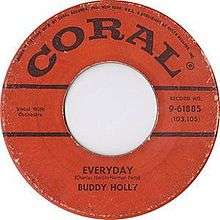
Katana
Historically, katana (刀) were one of the traditionally made Japanese swords (日本刀, nihontō) that were used by the samurai of feudal Japan. Modern versions of the katana are sometimes made using non-traditional materials and methods. The katana is characterized by its distinctive appearance: a curved, slender, single-edged blade with a circular or squared guard and long grip to accommodate two hands.
History
The production of swords in Japan is divided into specific time periods:
The first use of "katana" (gatana) as a word to describe a long sword that was different from a tachi occurs as early as the Kamakura Period (1185–1333). These references to "uchigatana" and "tsubagatana" seem to indicate a different style of sword, possibly a less costly sword for lower-ranking warriors. The evolution of the tachi into the katana seems to have started during the early Muromachi period (1337 to 1573). Starting around the year 1400, long swords signed with the "katana" signature were made. This was in response to samurai wearing their tachi in what is now called "katana style" (cutting edge up). Japanese swords are traditionally worn with the signature facing away from the wearer. When a tachi was worn in the style of a katana, with the cutting edge up, the tachi's signature would be facing the wrong way. The fact that swordsmiths started signing swords with a katana signature shows that some samurai of that time period had started wearing their swords in a different manner.
Katana (disambiguation)
Katana is Japanese for backsword and often refers to uchigatana, especially in English. For a list of fictional katana, see Katanas in fiction. Katana may also refer to:

Dreamcast
The Dreamcast (Japanese: ドリームキャスト, Hepburn: Dorīmukyasuto) is a home video game console released by Sega on November 27, 1998 in Japan, September 9, 1999 in North America, and October 14, 1999 in Europe. It was the first in the sixth generation of video game consoles, preceding Sony's PlayStation 2, Nintendo's GameCube and Microsoft's Xbox. The Dreamcast is Sega's final home console, marking the end of the company's 18 years in the console market.
In contrast to the expensive hardware of the unsuccessful Sega Saturn, the Dreamcast was designed to reduce costs with "off-the-shelf" components, including a Hitachi SH-4 CPU and an NEC PowerVR2 GPU. Released in Japan to a subdued reception, the Dreamcast enjoyed a successful U.S. launch backed by a large marketing campaign, but interest in the system steadily declined as Sony built hype for the upcoming PlayStation 2. Sales did not meet Sega's expectations despite several price cuts, and the company continued to incur significant financial losses. After a change in leadership, Sega discontinued the Dreamcast on March 31, 2001, withdrawing from the console business and restructuring itself as a third-party publisher. 9.13 million Dreamcast units were sold worldwide.

Everyday (OMD song)
"Everyday" was the third and last single from Orchestral Manoeuvres in the Dark's 1993 album Liberator. Co-founder Paul Humphreys, who had left the band four years prior, is credited as a co-writer.
"Everyday" was the only single from Liberator to miss the UK Top 25, charting at #59. Its accompanying music video features Sara Cox, who would later be known as a BBC Radio DJ.
Track listing
7" single
Cassette single
5" CD single
Chart positions

Everyday (Buddy Holly song)
"Everyday" is a song written by Buddy Holly and Norman Petty, recorded by Buddy Holly and the Crickets on May 29, 1957 and released on September 20, 1957 as the B-side to "Peggy Sue". On the original single the Crickets are not mentioned, but it is known that Holly plays acoustic guitar; drummer Jerry Allison slaps his hands on his lap for percussion; Joe B. Mauldin plays a standup acoustic bass; and producer Norman Petty's wife, Vi, plays the celesta (a keyboard instrument with a glockenspiel-like tone, used in such classical pieces as "Dance of the Sugarplum Fairy" from The Nutcracker). The song length is an economical 2 minutes and 5 seconds. The song is ranked #238 on the Rolling Stone magazine's list of The 500 Greatest Songs of All Time.
Cover versions
In 1958, Tina Robin, also with the Coral Records label, recorded a version of the song.
In 1960, Bobby Vee released a version as the B-side to his hit, "Rubber Ball".
John Denver recorded this song on his 1971 album Aerie and released the song as a single which peaked at no. 81 on the Billboard pop singles chart and no. 21 on the AC chart in 1972.

Realistic (album)
Realistic is the debut album by American indie pop band Ivy. It was released on February 14, 1995 by Seed Records. Musically, the album followed the material featured on Ivy's previous release, Lately. The album took influence from indie pop music, with partial influence from indie rock. Ivy collaborated with famed producer, Kurt Ralske, for each track. Lyrically, each track was written by band members, Dominique Durand, Andy Chase, and Adam Schlesinger.
Realistic received positive reviews from critics upon release. Commercially unsuccessful, the album did not peak on any record chart, nor did the singles released from the album.
Three singles were released from the album. "Get Enough", the album's lead single, was released in 1994 to general acclaim from critics, especially in the United Kingdom where it was promoted heavily. Singles "Don't Believe a Word" and "Beautiful" were both released in 1995 to highly positive reviews, but less success than "Get Enough".
Critical reception
Podcasts:

